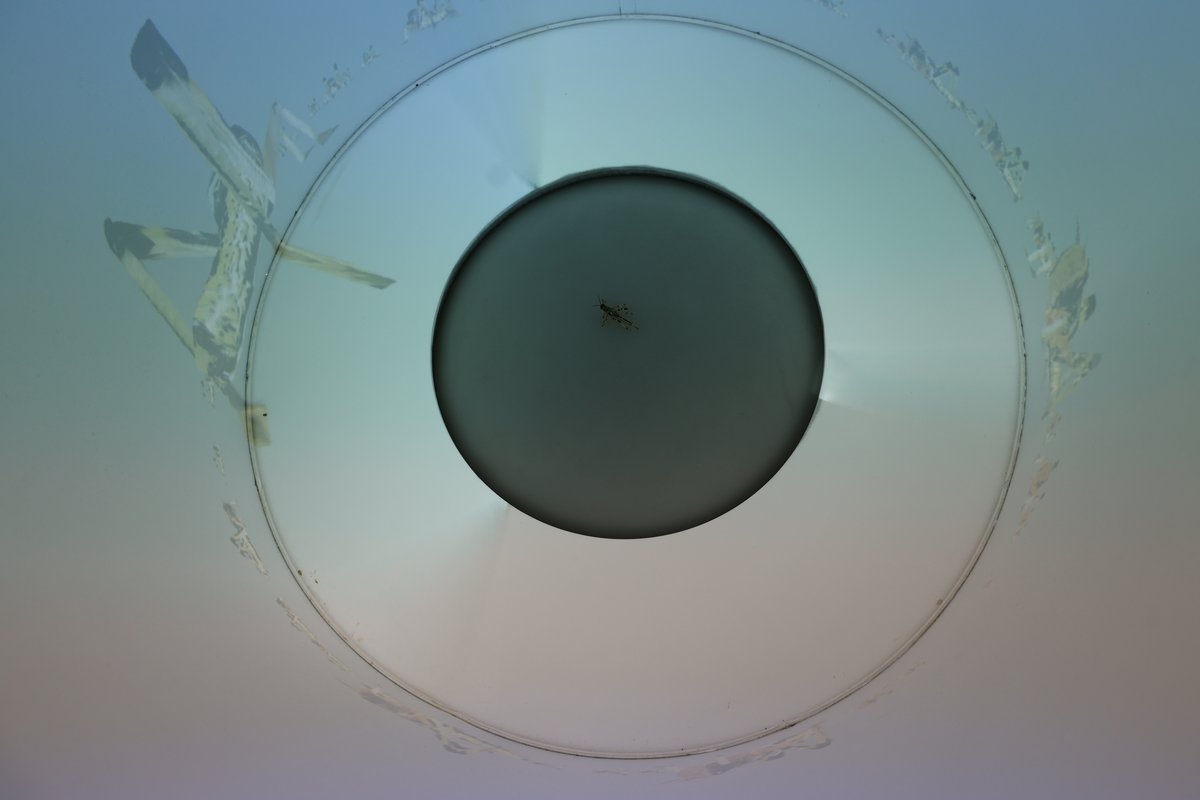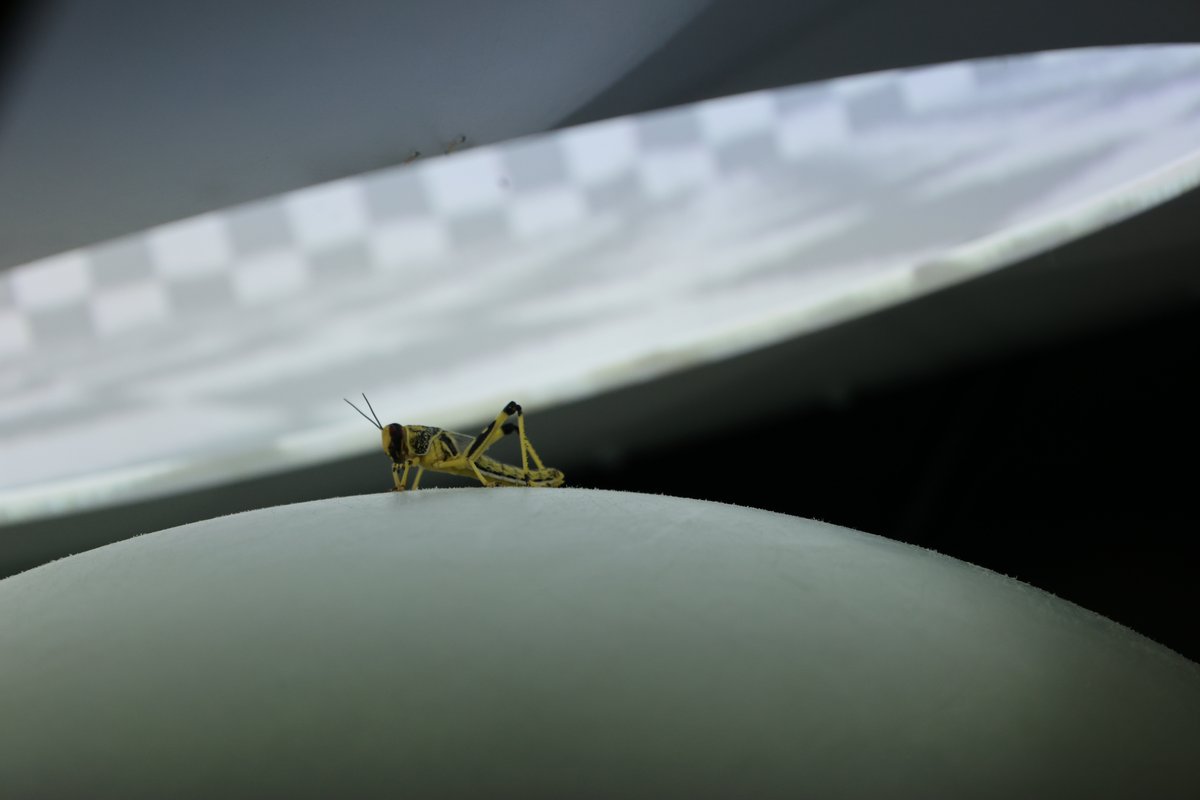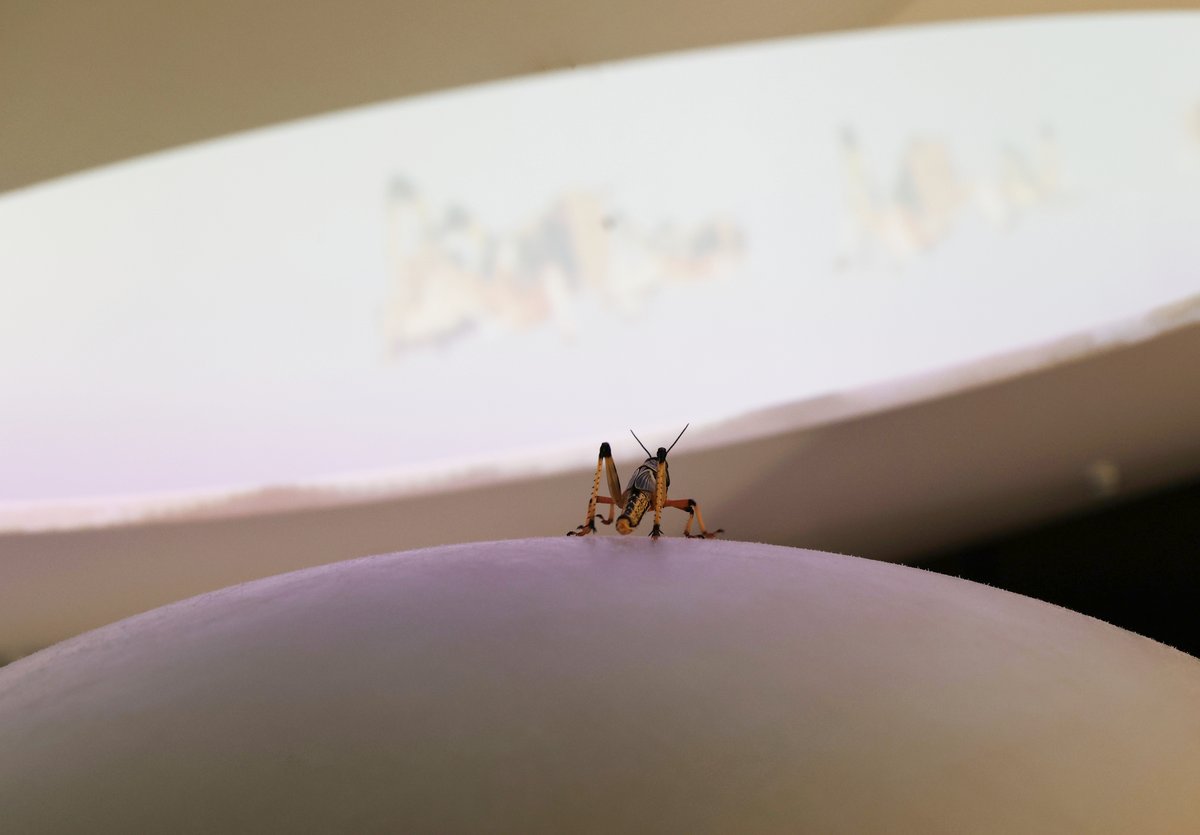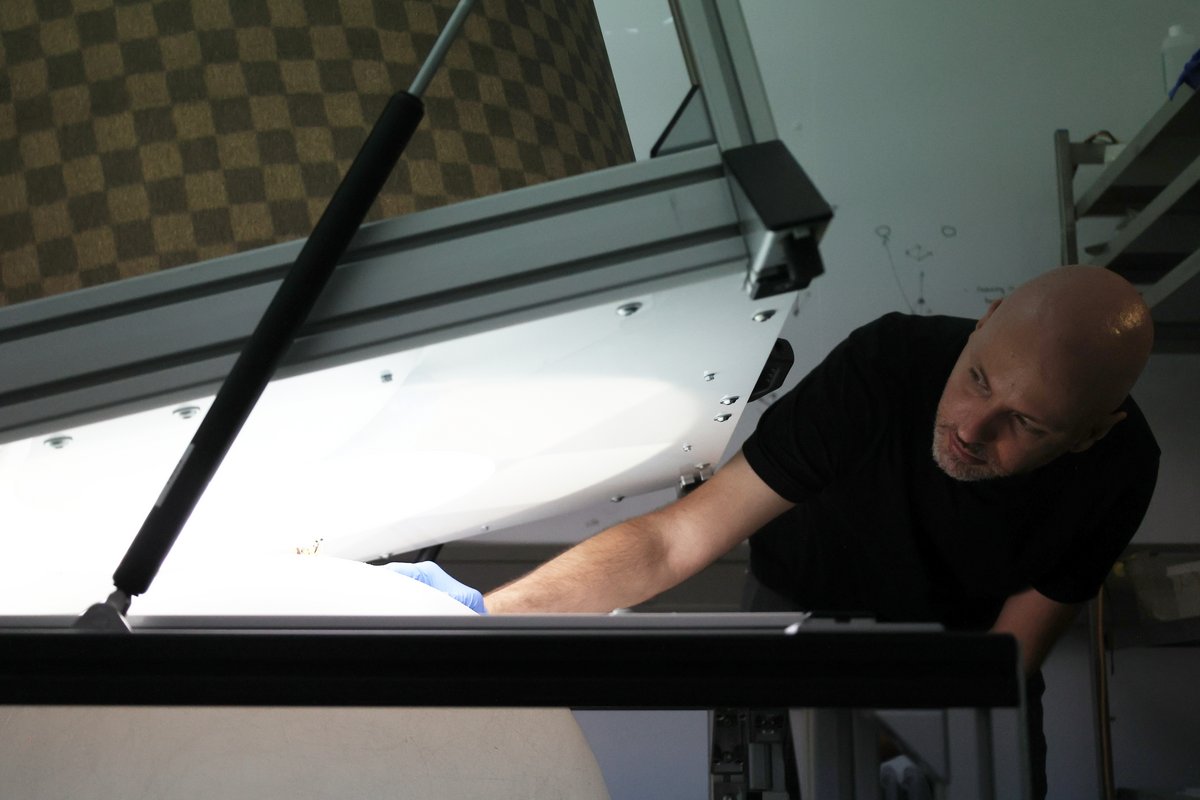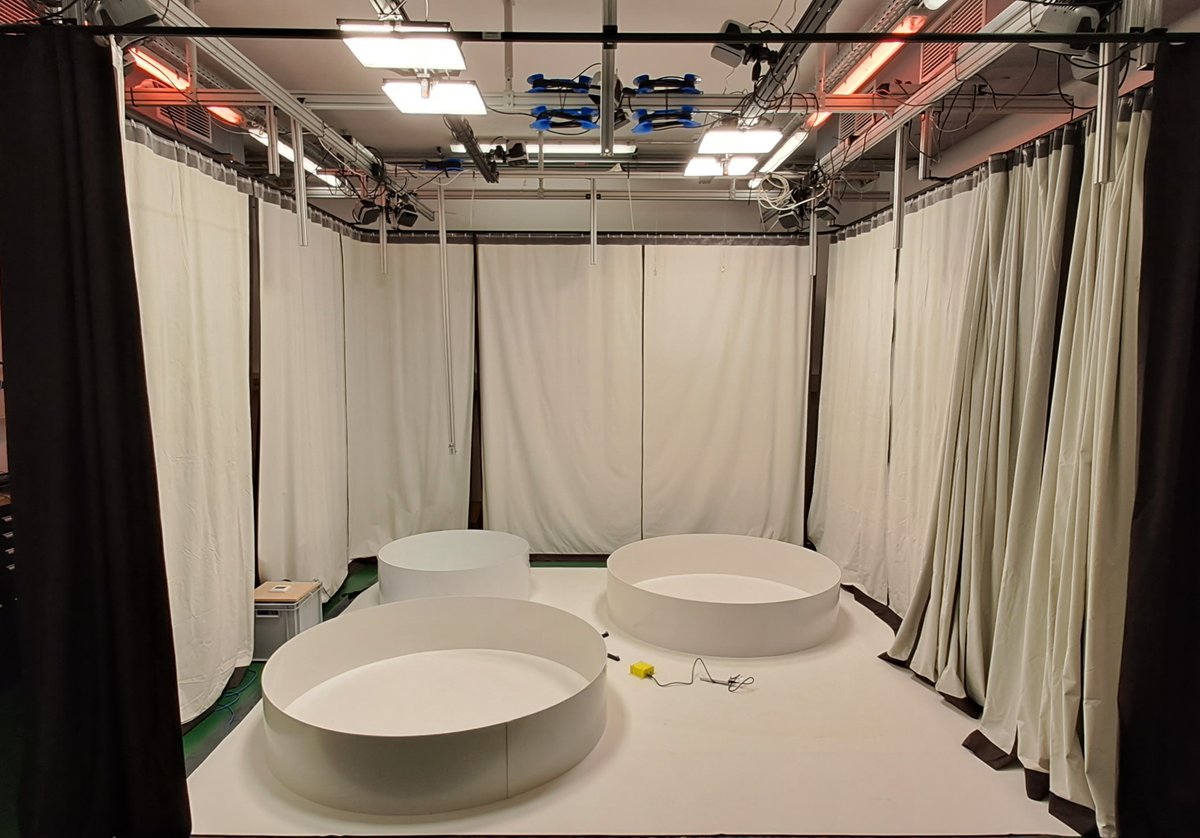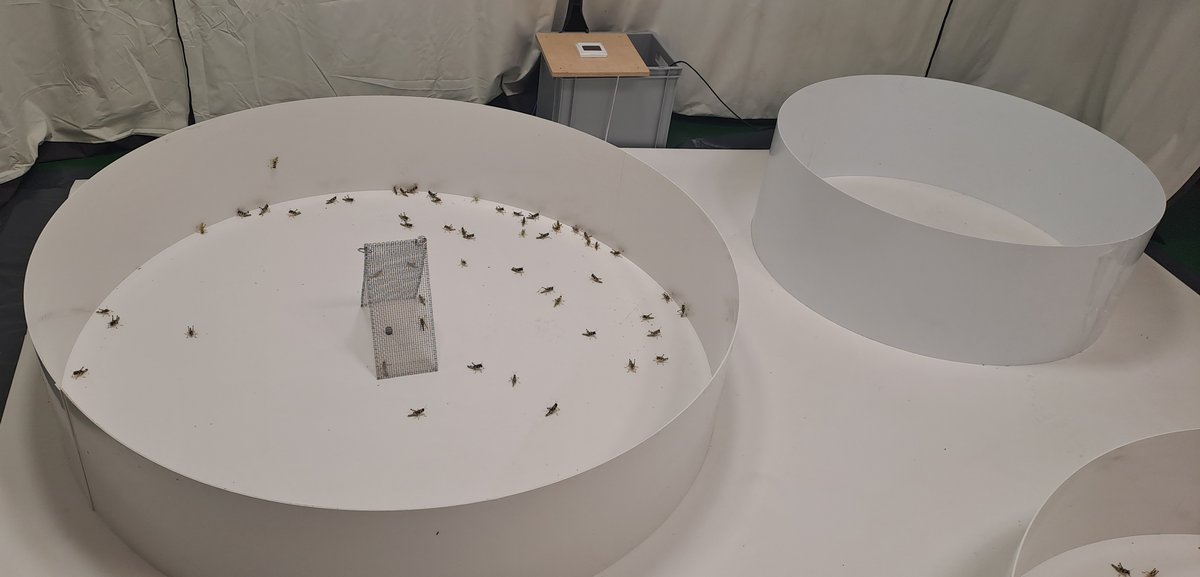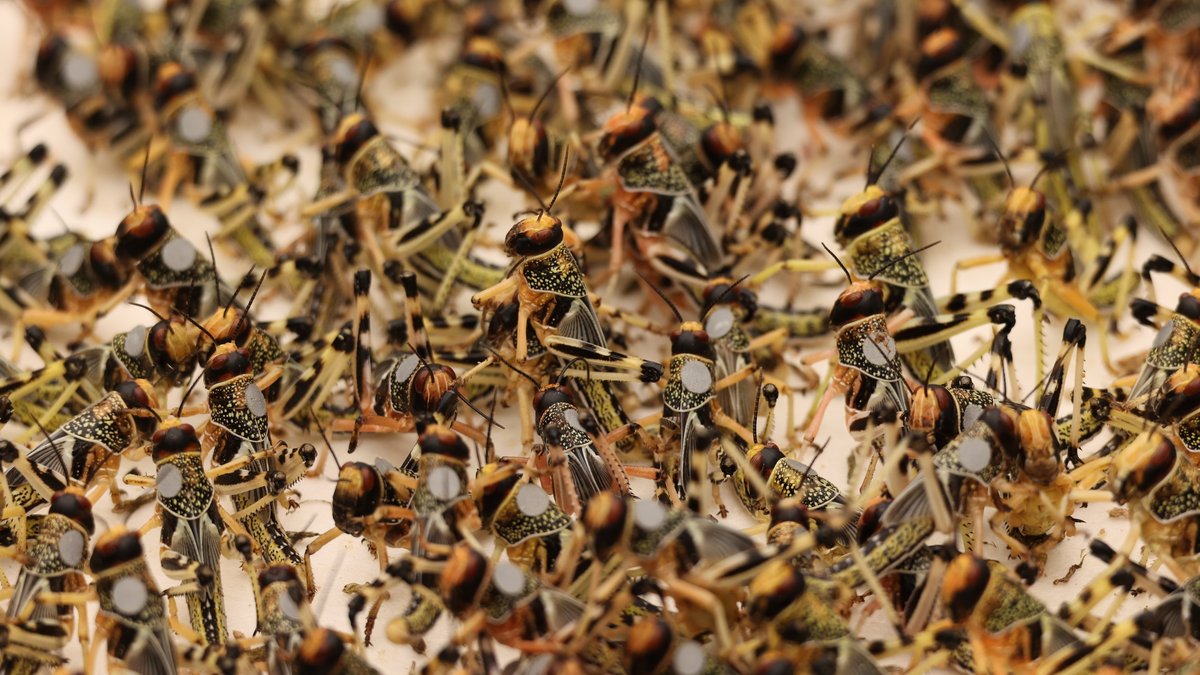
Multiscale analysis of locust swarms
Locusts are notorious plague insects. Locust swarms can cover hundreds of square kilometres and threaten food security of millions. Understanding the fundamental biological features that underlie locusts’ collective behaviour is of critical importance and is the focus of our project.
Like other arid-adapted organisms, desert locusts face considerable challenges in obtaining sufficient nutrients. They live in highly patchy, unpredictable environments, and their population density can vary enormously as a function of resource availability. The recurrent feedback between physiological needs (e.g. hunger), local multi-modal sensing, and movement, is therefore ultimately responsible for the formation of swarms. Utilising quantitative behaviour with real and virtual locust groups that include automated tracking, posture estimation and sensory manipulations, we study the mechanisms driving locust collective marching and the interactions between nutrition, movement, and swarm formation.
Locust VR
With a unique virtual reality setup tailored for locusts, we place a focal locust in a simulated environment. The setup is designed to allow full control over experimental variables to isolate specific factors in the environment and test how order emerges in mobile groups. In the photos below, postdoctoral researcher Sercan Sayin is testing how different visual cues impact movement, the interplay between density, coherence, and noise.
Foraging routes of locusts
The development of social phenotypes and how they relate to the structure of the nutritional environment and foraging behaviour are tested in mid-scale group experiments where the structure of a naturalistic environment is manipulated. Madhansai Narisetty, a joint PhD student of Einat Couzin-Fuchs and Ahmed-El Hady, is utilizing the Qualisys motion capture system to continuously track foraging routes of 180 locusts in the Imaging HIVE.
Large Scale Experiments in the Imaging Hangar
Large-scale phenomena are being tested in the Imaging Hangar within circular arenas spanning 5 meters in diameter. In a set of experiments conducted over a week, collective movements of up to ten thousand locusts were tracked and are currently being analyzed. Experiments were designed to investigate whether locust swarms may resemble physical materials or fluids, understand how startle responses of individual locusts may propagate within the swarm, and test hypotheses on the mechanisms underlying the formation of foraging bands of locusts similar to those seen in the field.
The Imaging Hangar includes a grid of fast motion capture cameras and high resolution visual cameras, along with high intensity LED panels and temperature control to create conditions suited to locust studies. These unique facilities are leveraged to record and track individuals within swarms that demonstrate large scale phenomena such as band formation often seen in the field, but which have not been previously reported under laboratory conditions. This would allow us to relate individual local interactions and decision-making to swarm wide patterns.
-
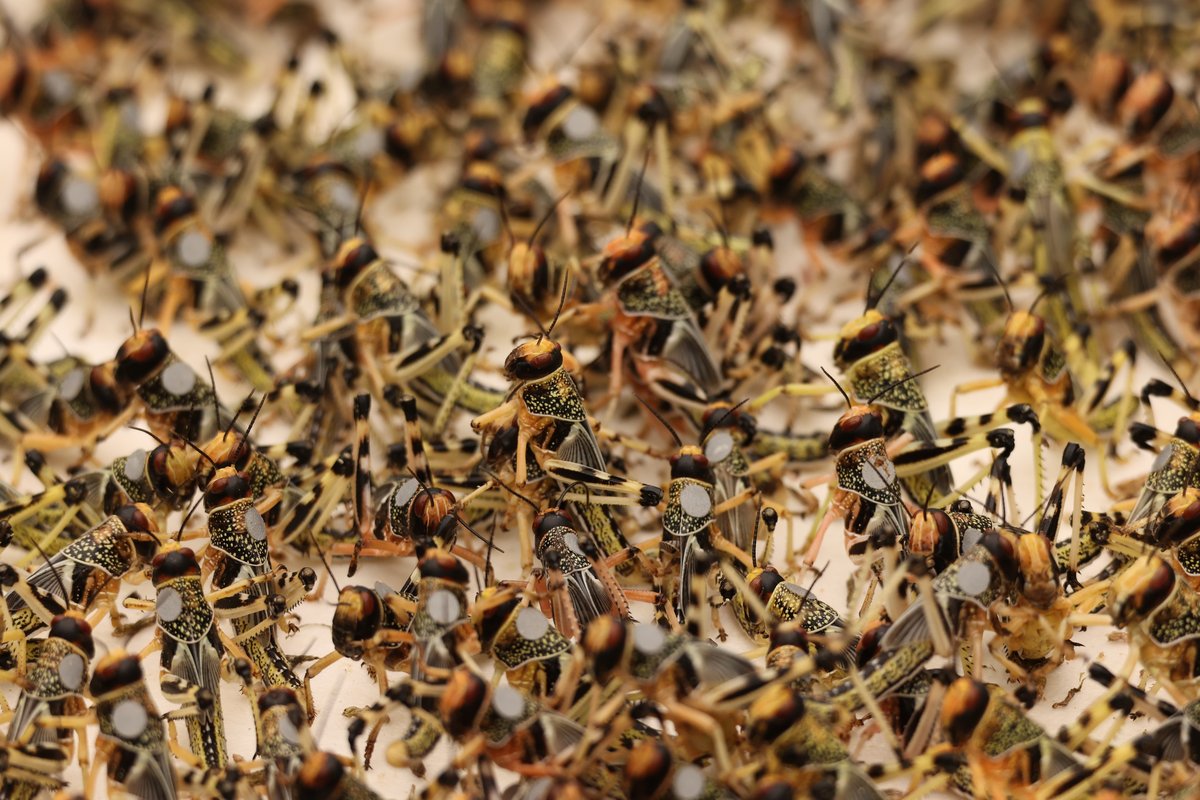
In a set of experiments conducted over a week, collective movements of up to ten thousand locusts were tracked and are currently being analyzed. Here you see the locusts in the arena - some of the locusts have a very tiny marker on the back for the tracking. © E. Böker, CASCB -
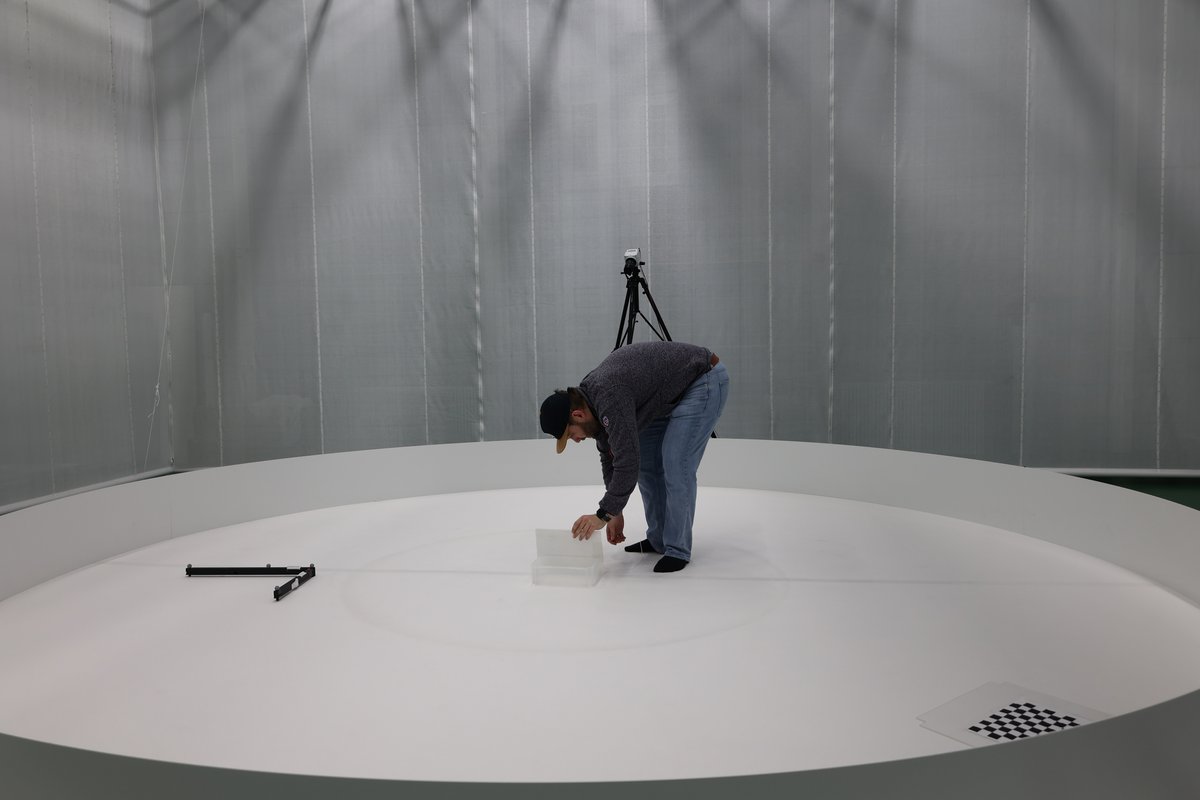
The Imaging Hangar Manager Mathias Günther prepares the arena. © E. Böler, CASCB -
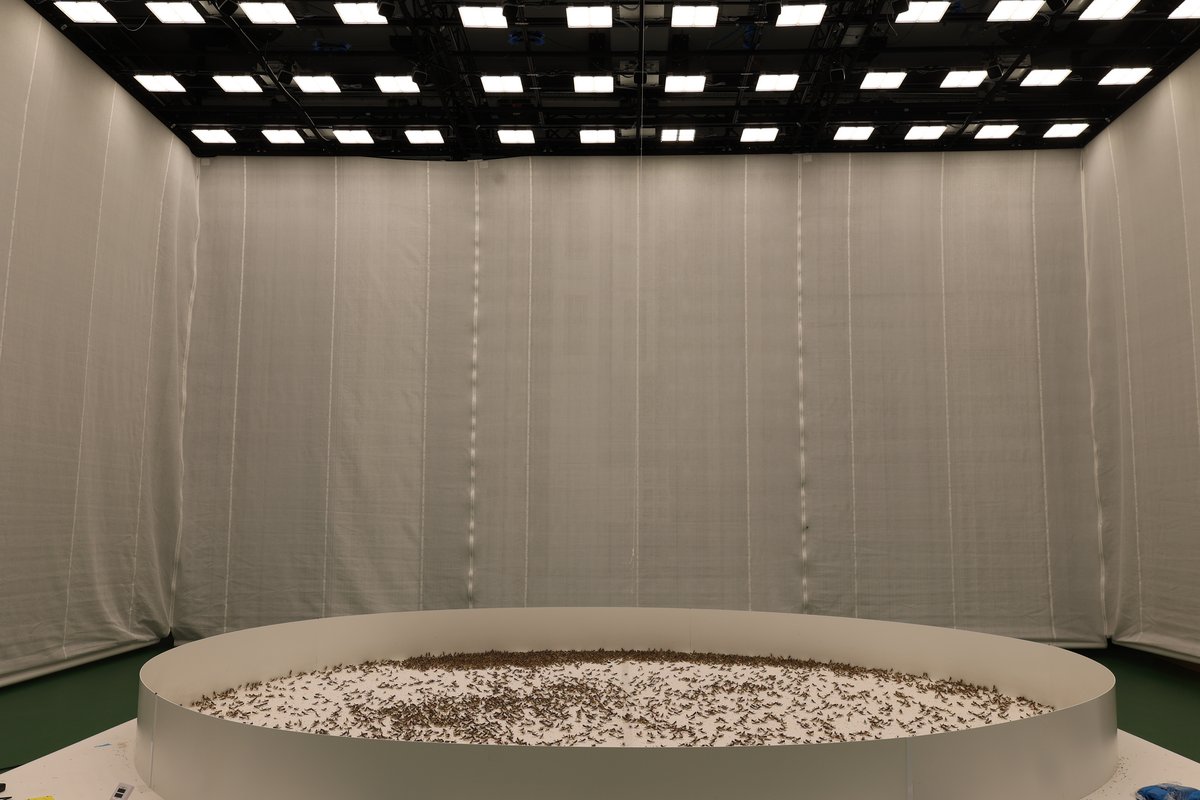
View of the Imaging Hangar. There are 10,000 locusts in an arena 5 meters in diameter. The animals are closely observed via a camera system. © E. Böker, CASCB. -
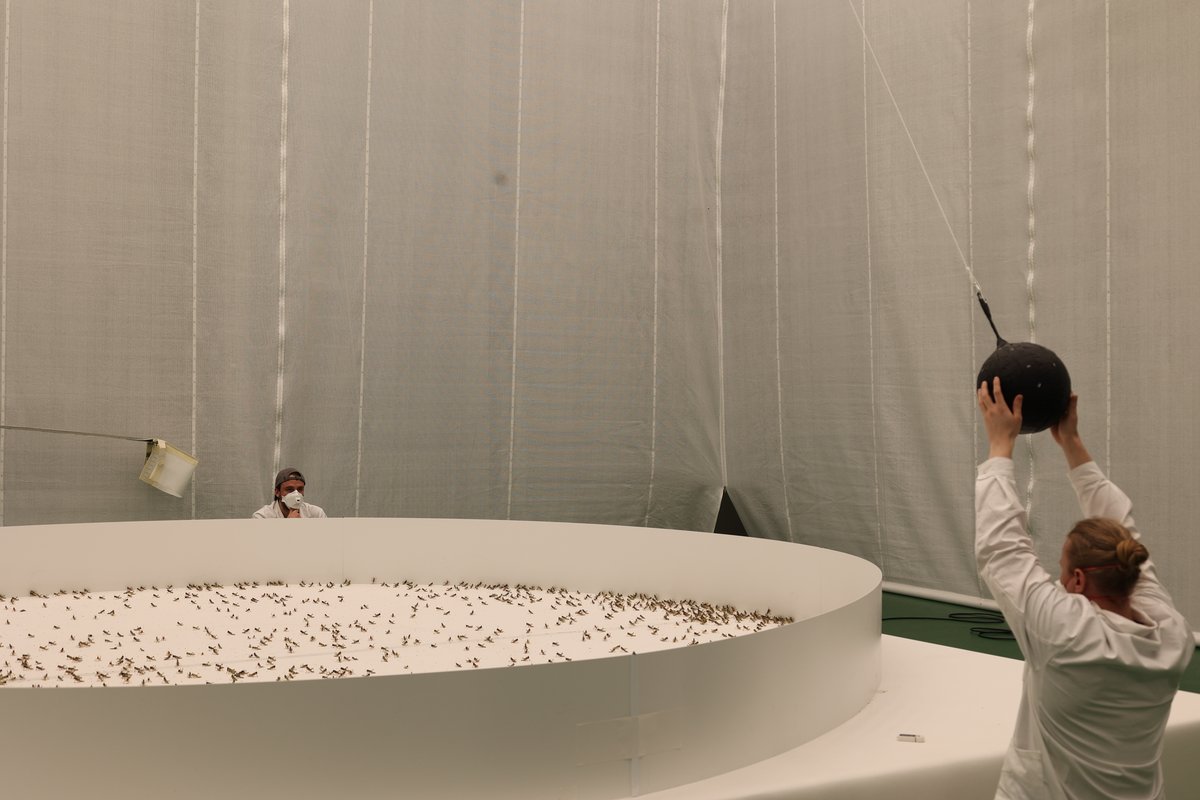
Two researchers conduct an experiment. They study how locally available information travels within the group and how individual decisions scale up to swarm dynamics. © E. Böker, CASCB. -
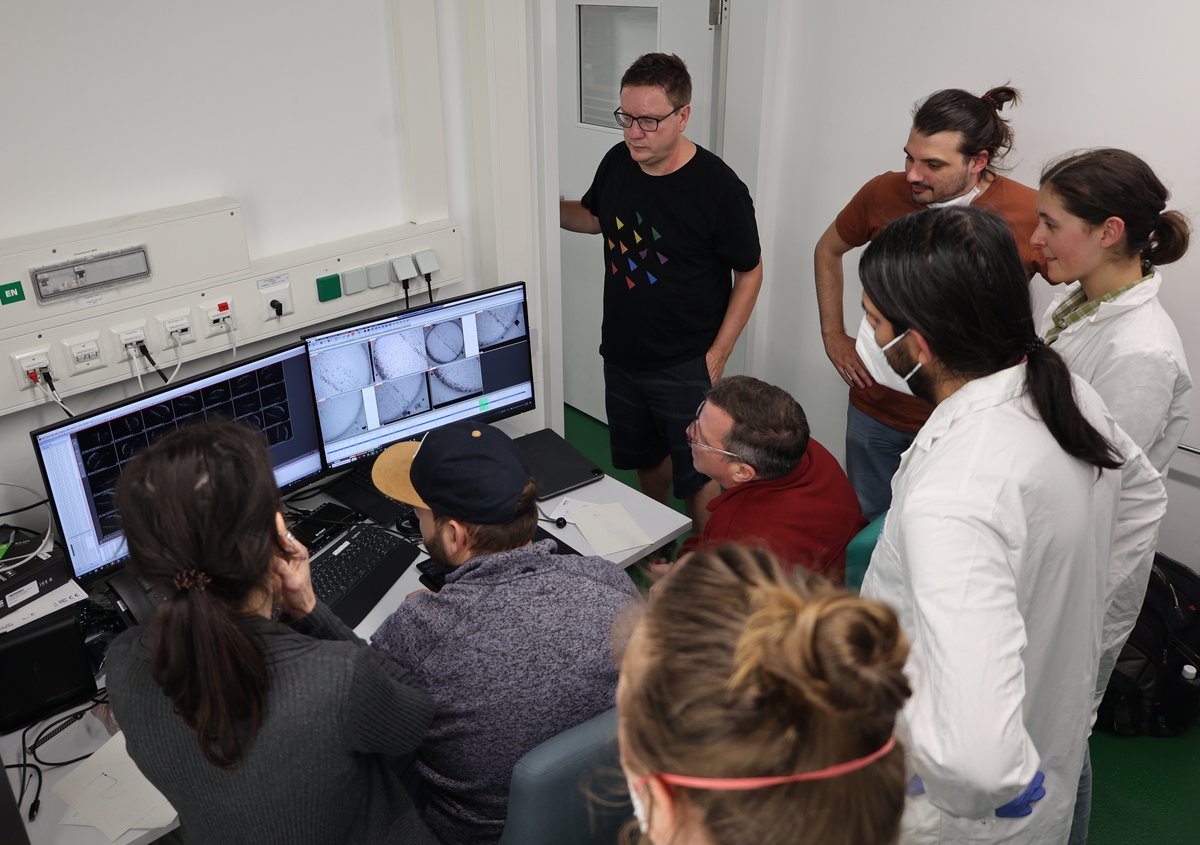
The team observes the animal movement from the control room. © E. Böker, CASCB. -
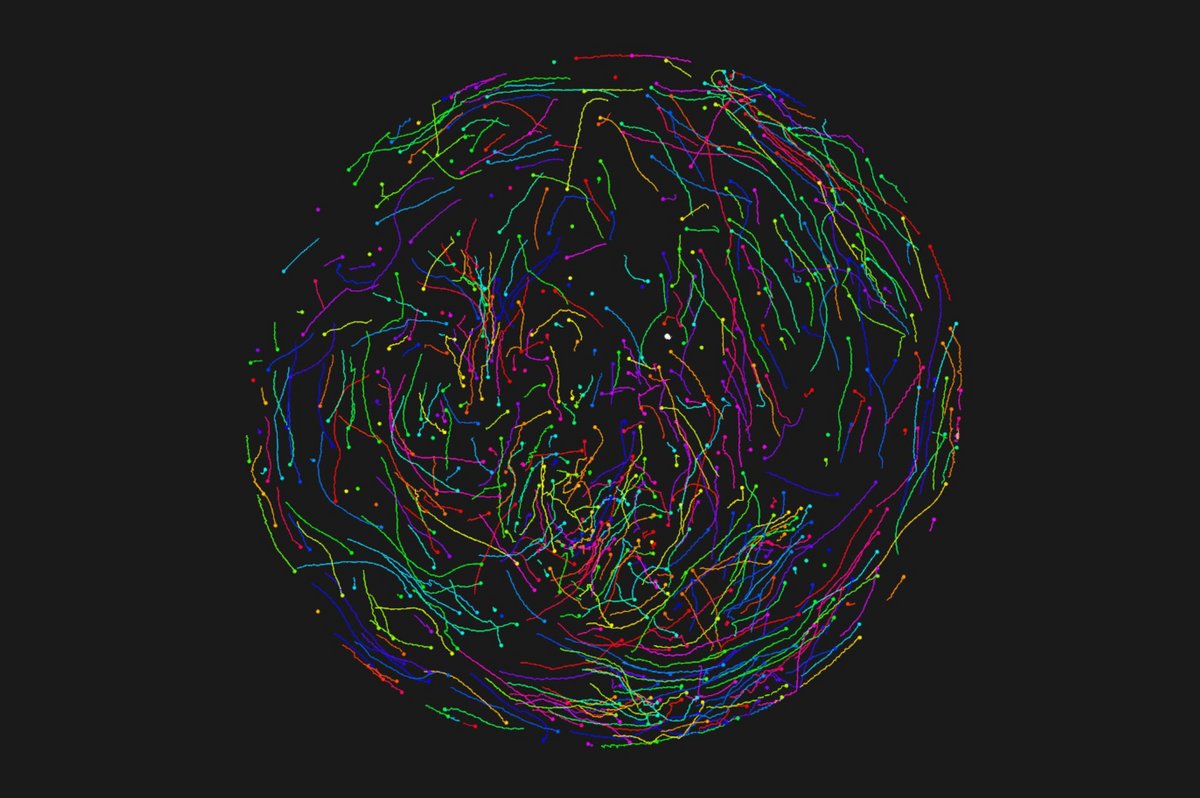
How the tracking data generated by the markers and the motion capture system looks like. © E. Böker, CASCB.

